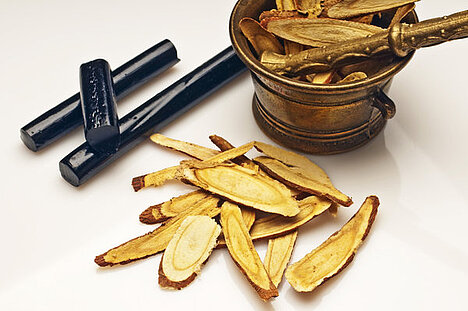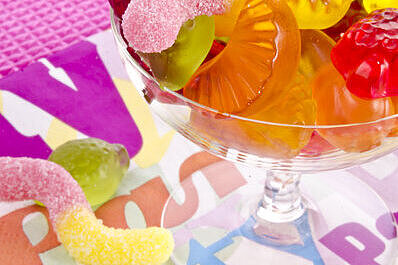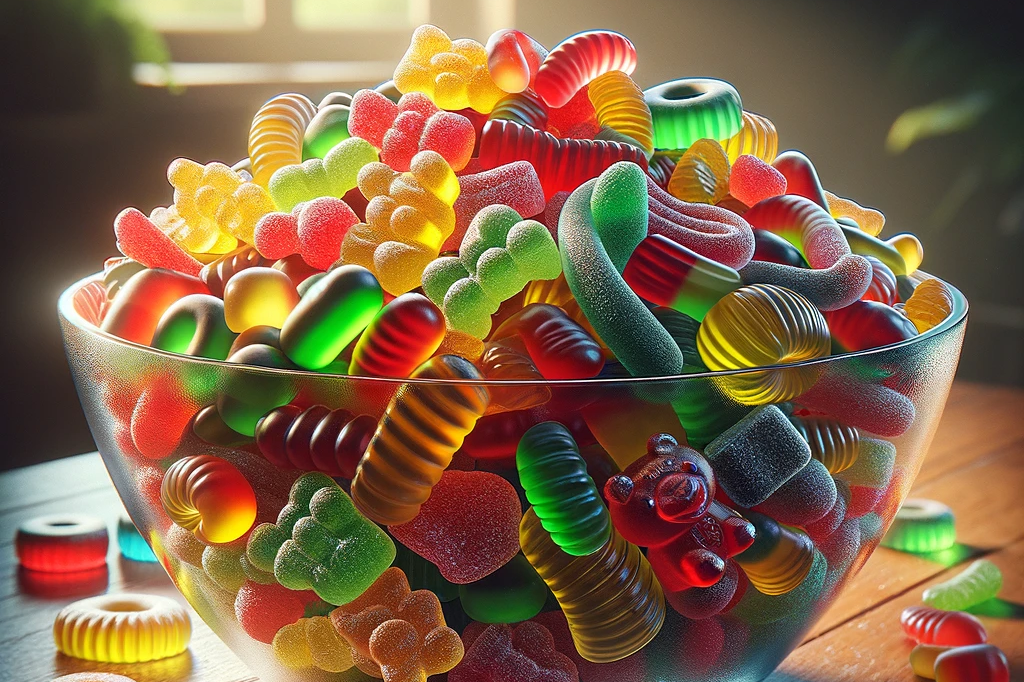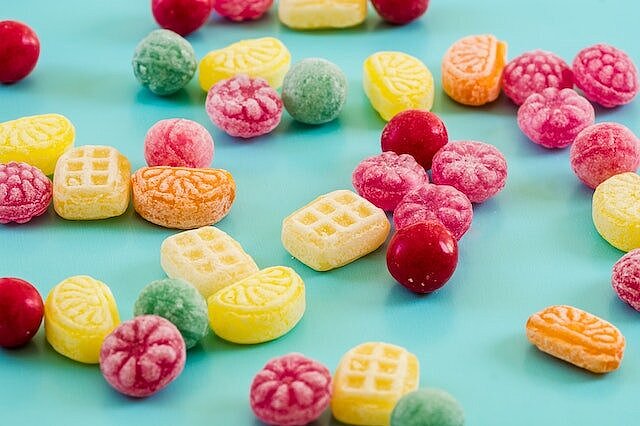Licorice

What is licorice?
Liquorice is a product made from the root of the licorice plant (Glycyrrhiza glabra), which grows in southern Europe and Asia. The root contains a sweet substance called glycyrrhizin, which is about 50 times sweeter than sugar. Glycyrrhizin also has anti-inflammatory, antibacterial and expectorant properties and is therefore used in medicine to treat respiratory and gastrointestinal diseases.
To make liquorice, the root is boiled, thickened and mixed with various ingredients such as sugar, starch, gelatine or ammonia. There are different types of liquorice, depending on taste, shape and color. Some people like liquorice very much, others find it too bitter or salty.
How does licorice affect dogs?
Liquorice is harmful or even fatal for dogs. The reason for this is glycyrrhizin, which in high doses can disrupt the dog's water and electrolyte balance. Glycyrrhizin inhibits an enzyme that is responsible for the excretion of sodium and water. This can lead to high blood pressure, water retention, cardiac arrhythmia, digestive problems and kidney problems.
Licorice varieties with a high ammonia content or salt are particularly dangerous. Ammonia is a chemical compound of ammonia and hydrochloric acid that gives licorice a pungent taste. Salt increases the dog's thirst and can lead to acidification of the body. Both can increase the negative effects of glycyrrhizin.
The quantity makes the poison. If your dog has only eaten a few pieces of licorice, you don't need to worry too much. At most, he may experience mild stomach discomfort or diarrhea. However, if he has eaten a large amount of licorice, you should take him to the vet immediately. He can be examined and treated there.
What to do if your dog has eaten licorice?
If you notice that your dog has eaten licorice, you should first try to find out how much he has eaten and what kind. This can help the vet assess the severity of the poisoning.
Observe your dog for signs of poisoning such as vomiting, diarrhea, loss of appetite, restlessness, tremors, weakness or shortness of breath. If you notice such symptoms or are unsure, call your vet or go directly to the veterinary clinic.
The vet will examine your dog and take blood and urine samples if necessary. They may also try to induce vomiting or give your dog activated charcoal to prevent or reduce the absorption of glycyrrhizin.
Treatment will depend on the severity of the poisoning. In some cases, it is sufficient to give your dog plenty of water and take it easy. In other cases, he will need to be given infusions to compensate for the loss of fluids and electrolytes. Sometimes medication is also necessary to regulate blood pressure or heart rate.
The prognosis for your dog depends on how quickly you react and how well he is treated. In most cases, dogs recover completely from licorice poisoning. In rare cases, however, permanent damage to the kidneys or heart can occur.
How can you prevent licorice poisoning in your dog?
The best prevention is, of course, not to give your dog any licorice at all or to deny him access to licorice. Always keep your sweets out of his reach and make sure he doesn't find any leftover licorice lying around.
If you want to treat your dog to something sweet, there are many other alternatives that are healthier for him than licorice. For example, you can give him fruit such as apples or bananas or buy him special dog treats.
Liquorice may be delicious for us humans, but it is dangerous for dogs. That's why you should keep it to yourself and offer your dog something else.
Properties 3
Are you looking for other ingredients with a specific property?
Just click on them to find more.
If you notice any signs of hypersensitivity or poisoning in your dog, you should see your vet immediately. We are not a substitute for a vet, but we try to be as accurate as possible. Every dog reacts differently and we recommend you get a second opinion or consult your vet if in doubt.
Stay healthy and take good care of your four-legged friend!😊
Similar to Licorice
Gummy bears consist mainly of gelatine, sugar, glucose syrup, flavorings and colorings. Gelatine is an animal product obtained from the bones, skin and tendons of pigs or cattle. Sugar and glucose...
Gummy sweets are soft sweets made from a mixture of sugar, glucose syrup, starch, flavorings and colorings, as well as gelling agents such as gelatin or plant-based alternatives such as agar-agar....
Chewing gum is a soft mass of various ingredients that can be chewed. The main ingredients are usually gum arabic (a natural resin), sugar or sweeteners, flavorings and colorings. Some chewing gums...
Dogs love snacks and will eat anything that comes their way. This includes chocolate, sweets and other sweets. But be careful: these foods can be very harmful for dogs. Chocolate, for example,...



